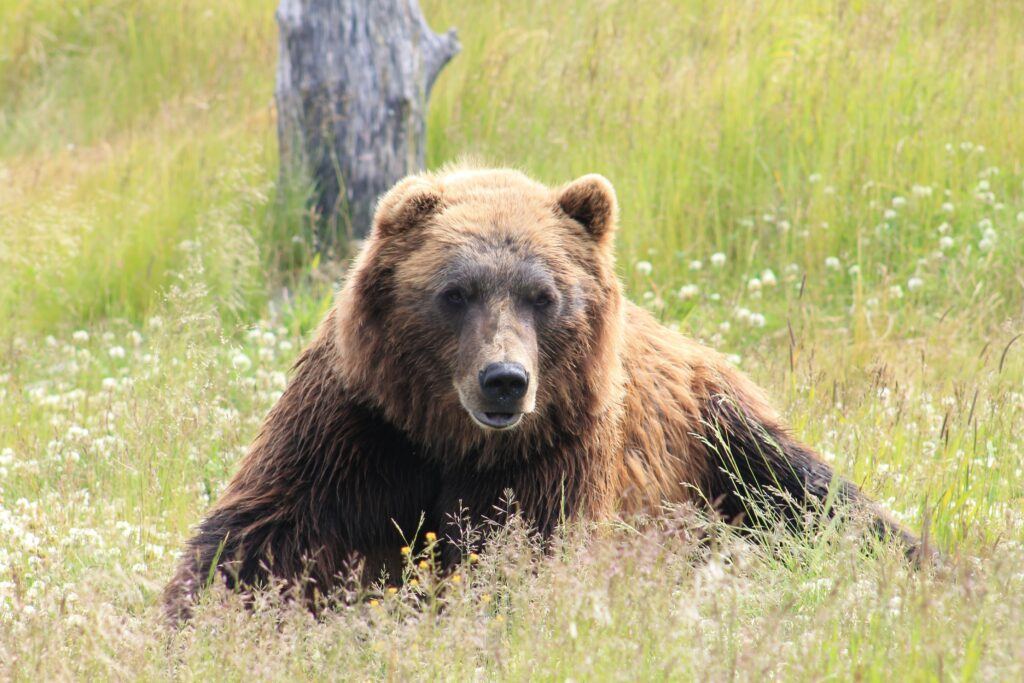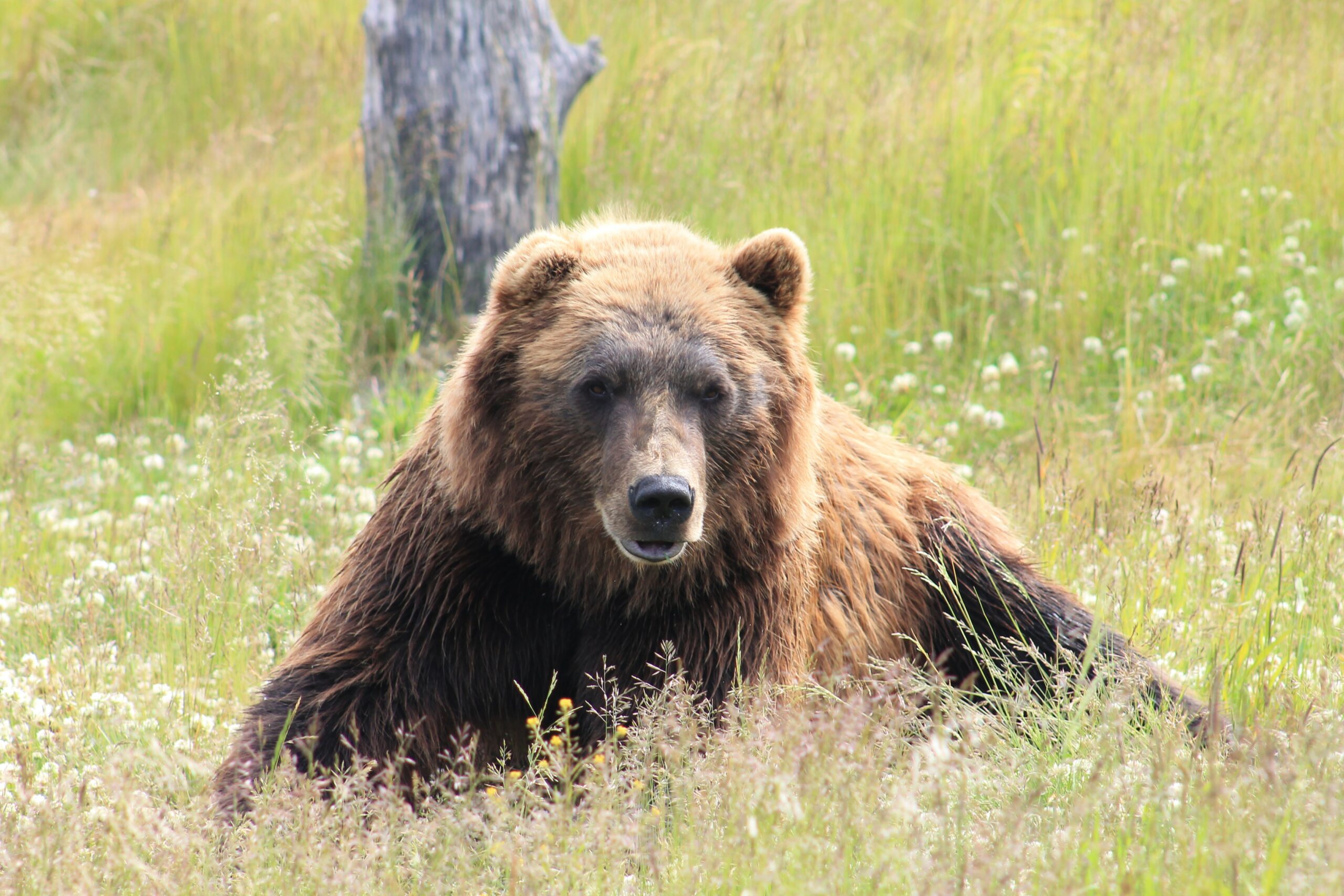
Knowing how to react to animals in the wild can help to ensure your safety and the animal’s well-being.
Hiking in the great outdoors offers a unique opportunity to connect with nature. But be prepared ahead of time for the unexpected encounters with wild animals.
In this article, we will give some practical guidelines on how to deal with these encounters.
I used to live in the Los Angeles area and often hiked or backpacked in the San Gabriel mountains.
I rarely saw any other animals but I occasionally would come upon snakes.
Once, I almost sat on a log where a small rattlesnake was sunning itself. Noticing it out of the corner of my eye, I went through gyrating motions that I didn’t even know I could do to get away from the snake. Had you been there you would have fallen down laughing at my antics.
The snake’s response — It made a perfect u-turn and slithered back along itself and disappeared.
Another time I noticed a king snake sunning itself and just stood there admiring its beauty.
Educate Yourself
Before you go, take the time to educate yourself about the local wildlife. Learn about the species you are most likely to encounter, their behavior, habitats, and any potential risks.
Familiarize yourself with the signs and tracks to aid in identification during encounters.
Local park authorities, field guides, and online resources can provide you with this information.
Stay Alert and Observe
Maintaining awareness of your surroundings is crucial while hiking. Keep an eye out for any signs of animal presence such as tracks, scat, or claw marks on trees.
Be especially vigilant near water sources or areas with abundant vegetation. These tend to attract wildlife.
If you notice signs of an animal nearby, slow down, and proceed with caution. Observe from a safe distance, using binoculars or a camera with zoom capabilities.
Respect Their Space
It’s vital to respect wild animals’ natural habitat and maintain a safe distance. Getting too close can agitate or provoke defensive behavior. Which can increase the risk of harm to both you and the animal.
Use the “rule of thumb” guideline and stay at least 100 feet (30 meters) away from large mammals like bears, elk, or moose.
For smaller animals like coyotes or foxes, maintain a distance of 50 feet (15 meters). If the animal shows signs of stress or agitation, back away slowly without turning your back to it.
Never try to aid an injured or sick animal. Instead notify a Ranger or other authority about the animal’s location.
Do Not Feed or Entice
Feeding wild animals is a definite no-no.
It can alter their natural behavior and can lead to dangerous situations. Do not attempt to feed or lure animals with food. This habituates them to human presence and may result in aggressive behavior.
Get this idea completely out of your head.
Store your food in secure containers to avoid attracting wildlife to your campsite. Dispose of any trash or bring it out with you if no disposal is available. Litter may draw animals closer to human areas.
By keeping a clean, scent-free campsite, you reduce the likelihood of unwanted encounters.
Stay Calm and Make Noise
If you find yourself too close to a wild animal, it’s crucial to remain calm. Most animals will not pose a threat unless they feel cornered or provoked. Most animals will detect your presence before you ever detect theirs.
Avoid sudden movements and maintain eye contact, showing the animal that you are aware of it.
If the animal approaches, make yourself look bigger by raising your arms and backpack. Speak in calm and firm tones to assert your presence.
In most cases, animals will retreat if they perceive you as a potential threat.
Understand Species-Specific Responses
Different species may exhibit distinct behaviors during encounters. Predatory animals like mountain lions or wolves may perceive hikers as a potential threat or prey.
While herbivores like deer or moose can act defensively to protect their young. Research the specific species in your hiking area to understand their typical responses.
For example, with a bear encounter, stay calm, avoid direct eye contact, and speak softly to let the bear know you are human. Play dead if attacked by a grizzly but fight back if attacked by a black bear.
Encountering wildlife while hiking can be an awe-inspiring experience. But it’s important to focus on safety and respect for the animals.
By educating ourselves, staying alert, and maintaining distance, we can coexist in harmony with the creatures that call the wilderness their home. Remember, they are in their territory, and we are mere visitors.
Follow these guidelines, to ensure their safety. Contribute to the preservation of our natural world for future generations to enjoy.
Happy hiking!

